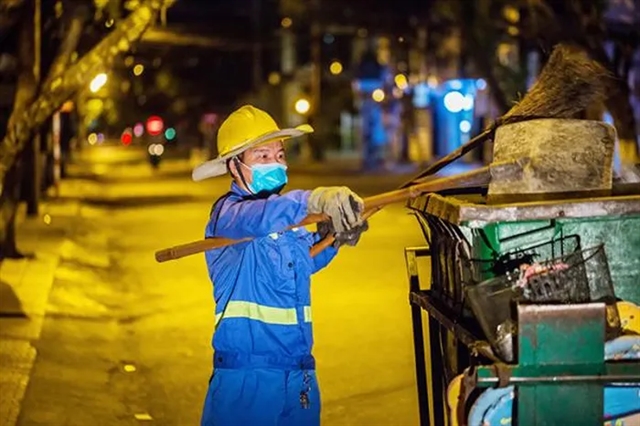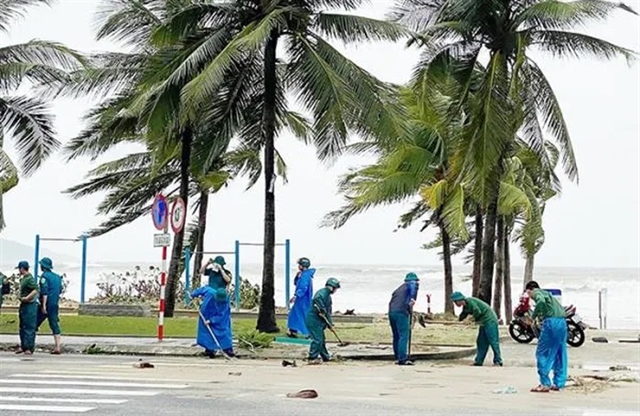 Society
Society

 |
| Đỗ Minh Nguyệt, an environmental worker at Đà Nẵng Urban Environment Joint Stock Company, clears up after the typhoon. Photo antg.cand.com.vn |
ĐÀ NẴNG - It’s been a long day for environmental worker Đỗ Minh Nguyệt, as she collects a different type of debris strewn across the streets of Đà Nãng.
She’s normally used to collecting garbage and general household waste, but now she picks up tree branch after tree branch, cleaning up the streets after super typhoon Noru hit the central city.
After three hours of back-breaking efforts, she and her colleagues had finally managed to clean one 500m stretch of road.
Dripping in sweat and caked in mud, the 40-year-old could finally take a break, albeit a pretty short one as there is still plenty of work left to do.
“The job of an environmental worker seems simple, but it contains a lot of hard work,” she said.
“Especially after every downpour, storm, or street-organised event, each worker has to make more effort to finish.”
 |
| Environmental workers cleaning up the sand blown over the streets in Đà Nẵng City after typhoon Noru. Photo antg.cand.com.vn |
Typhoon Noru hit Đà Nãng City on September 28. It sparked simultaneous efforts by almost 2,000 environmental workers and staff from the city’s Park and Tree Company to clean up.
“Before the storm, many trees are pruned to ensure safety in the rainy season,” said Phúc who works for the Park and Tree Company.
“However, the number of trees in the city is very large, so there are still many trees that have not been pruned, leading to uprooted trees and broken branches.
“After the storm, besides all the environmental workers mobilised to clean the streets, the police and military units also came to support local authorities, to ensure people could quickly return to daily life.”
Garbage collection and tree-branch trimming trucks were operating at full capacity day and night. Workers used chainsaws to prune branches, limiting danger to passers-by.
The work of environmental workers like Nguyệt includes sweeping and collecting garbage in bins so that at midnight, trucks could collect and move to the treatment plant.
However, daily work became more difficult, after the heavy rain as the amount of leaves and garbage was more and the road surface was waterlogged.
Each worker, with simple tools of a broom, a trolley and a shovel had to complete a large amount of work every day.
Working for a long time made the staff tired, Nguyệt said that she had to clean a whole street in Liên Chiểu District.
But she added: “It is still better than my colleagues in the coastal area, where more tree branches fell due to the sea wind and sand flying from the beach to the road making the work harder.”
Nguyễn Thị Tân, 43, said the amount of garbage and tree branches on the road increased, requiring workers to put in more effort to clear the streets.
Tân said: “So, whether it's cold or in the middle of the sunny season, or in heavy rain, environmental workers with their garbage trucks still work to make sure the streets are clear of dirt.”
When night fell, while everyone was asleep, the sound of the workers' bamboo brooms could be heard. For them, cleaning the streets was not only for a monthly wage but also to help the city recover from the typhoon. VNS




